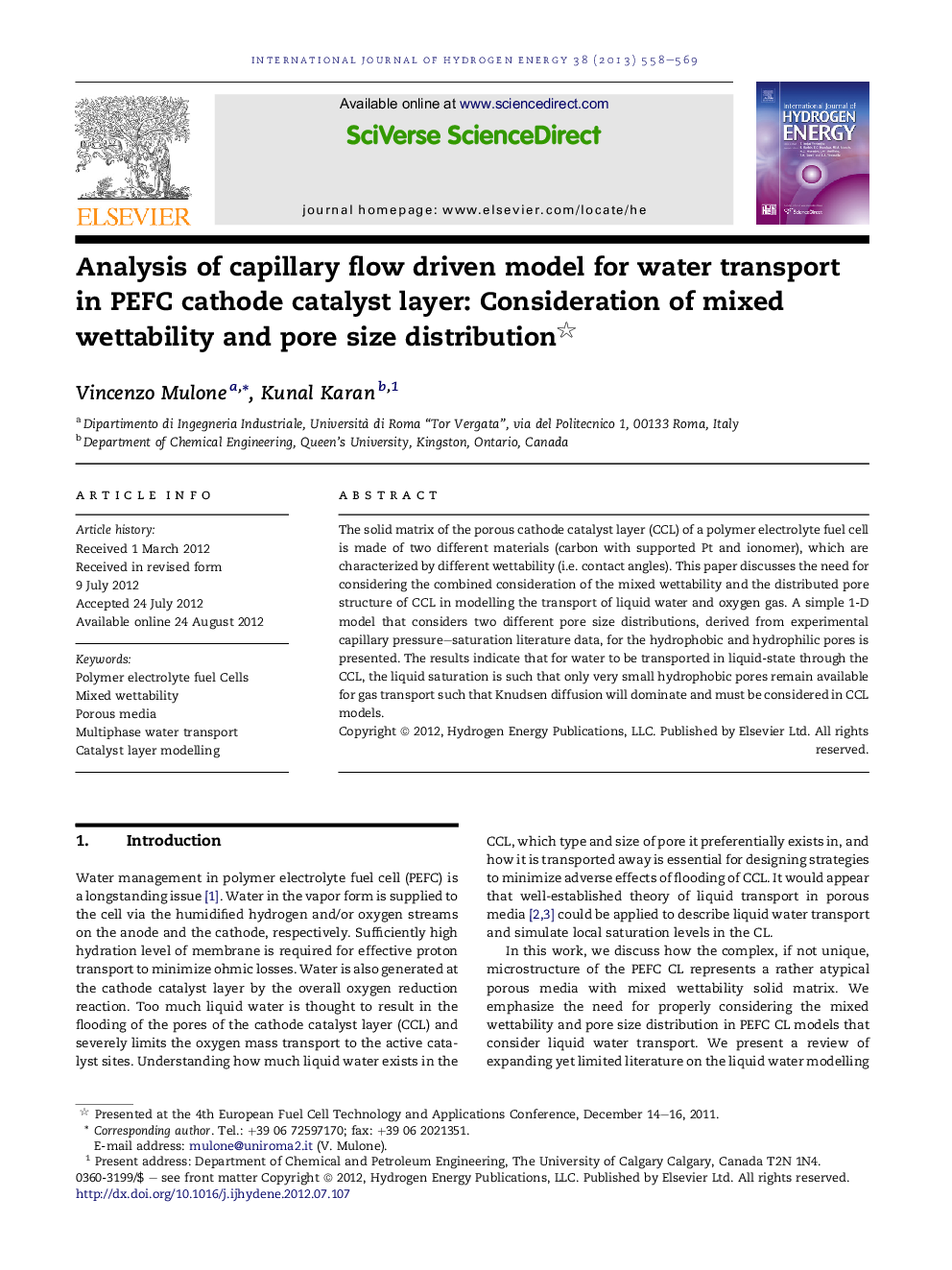| Article ID | Journal | Published Year | Pages | File Type |
|---|---|---|---|---|
| 1274404 | International Journal of Hydrogen Energy | 2013 | 12 Pages |
The solid matrix of the porous cathode catalyst layer (CCL) of a polymer electrolyte fuel cell is made of two different materials (carbon with supported Pt and ionomer), which are characterized by different wettability (i.e. contact angles). This paper discusses the need for considering the combined consideration of the mixed wettability and the distributed pore structure of CCL in modelling the transport of liquid water and oxygen gas. A simple 1-D model that considers two different pore size distributions, derived from experimental capillary pressure–saturation literature data, for the hydrophobic and hydrophilic pores is presented. The results indicate that for water to be transported in liquid-state through the CCL, the liquid saturation is such that only very small hydrophobic pores remain available for gas transport such that Knudsen diffusion will dominate and must be considered in CCL models.
► Consideration of mixed wettability in catalyst layer modelling. ► Effects of mixed wettable pore size distributions. ► Positive pressure is needed to transport liquid water. ► Open hydrophobic pores determine Knudsen diffusion regime.
